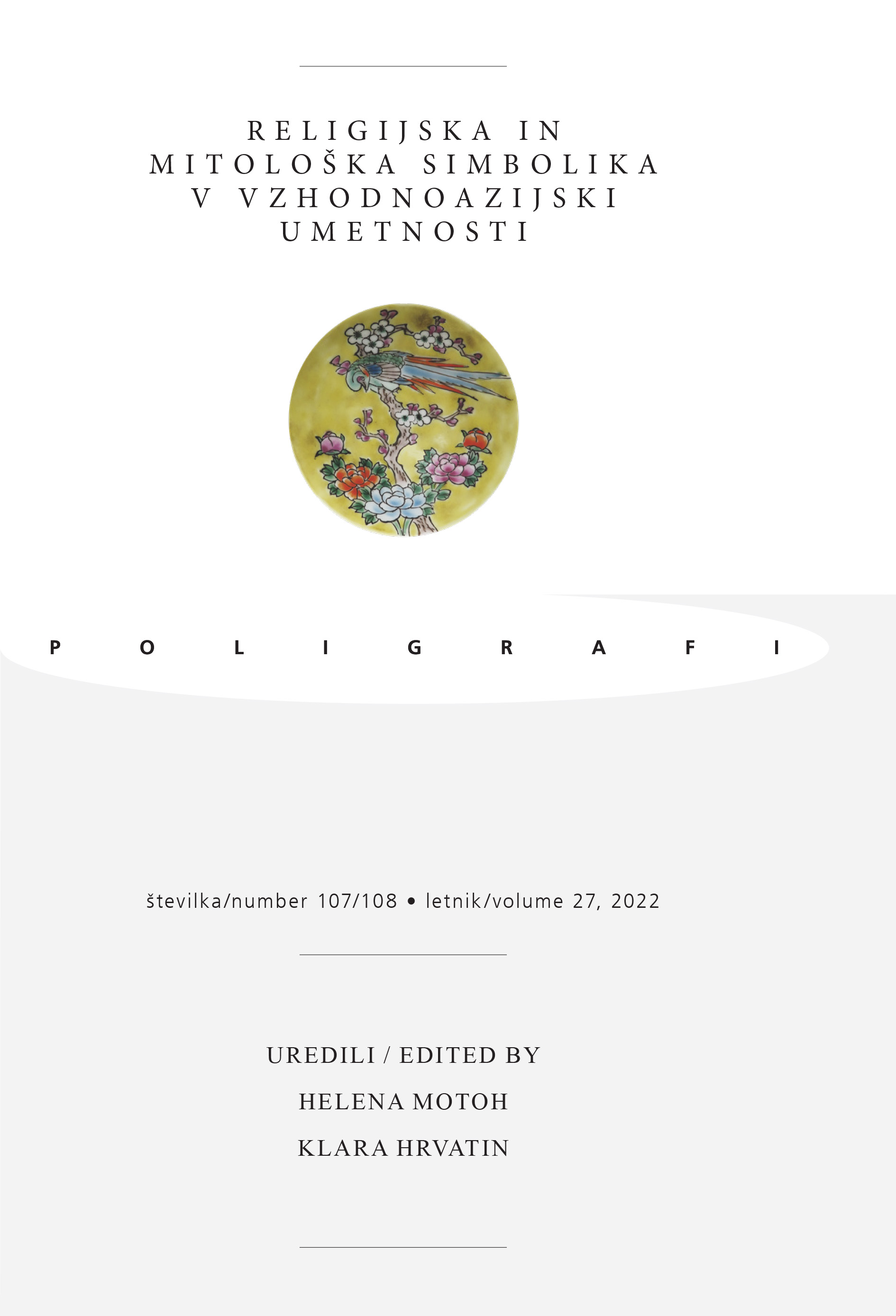Domesticating the Foreign
Opium Paraphernalia in the Skušek Collection
DOI:
https://doi.org/10.35469/poligrafi.2022.361Keywords:
Opium objects, East-Asian Collections, Ivan Skušek jr., domestication, chinese iconographyAbstract
The extremely large collection of objects brought from Beijing to Ljubljana in 1920 by naval officer Ivan Skušek Jr. and his Japanese wife Tsuneko Kondo Kawase, also includes several opium pipes, a few opium lamps and some other objects related to opium use. The objects are exquisitely decorated with complex motifs. While this is the main topic, the paper also aims to add context to this specific aesthetic and explore the cultural framework in which the import of these objects to Europe took place. The first part focuses on the history of opium use in China. The second part analyses the elements of the aesthetics of Chinese opium-related paraphernalia. The third, central part of the text focuses on a thorough analysis of the opium objects in the Skušek Collection and the motifs and symbols they incorporate. Finally, it presents opium paraphernalia decorated with traditional Chinese motifs and symbols as an interesting embodiment of the complex and fluid relation to the foreign, forbidden, and fascinating, and a good example of the iconographic domestication of this foreignness.
Downloads
References
Bjaaland Welch, Patricia. Chinese Art – A Guide to Motifs and Visual Imagery. Tokio, Rutland, Singapore: Tuttle Publishing, 2008.
Dikötter, Frank, Lars Laamann in Xun Zhou. Narcotic Culture – A History of Drugs in China. London: Hurst&Company, 2004.
Go, Simon, in Wenzheng Wu. Hong Kong Apothecary: A Visual History of Chinese Medicine Packaging. Princeton: Princeton Architectural Press, 2003.
INCB. Report of the International Narcotics Control Board 1998. New York: United Nations, 1999.
Jovanović, Vladan. »Jugoslavensko-američka opijumska suradnja 1929.–1941. godine.« Časopis za suvremenu povijest 50, št. 1, (maj 2018): 36–65. https://doi.org/10.22586/csp.v50i1.75.
Krbavčič, Aleš, in Slavko Pečar. »Od prve objave odkritja morfina (1805) do njegovega mednarodnega priznanja (1817).« Farmacevtski vestnik 68, št. 5 (2017): 315–325.
Lee, Peter. Opium Culture – The Art and Ritual of the Chinese Tradition. Rochester: Park Street Press, 2006.
Martin, Steven. The Art of Opium Antiques. Chiang Mai: Silkworm Books, 2007.
Milligan, Barry. »The Opium Den in London.« V Smoke: A Global History of Smoking, uredila Sander L. Gilman in Zhou Xun, 118–125. London: Reaktion Books, 2004.
Odell, Dawn. »Delftware and the Domestication of Chinese Porcelain.« V EurAsian Matters: China, Europe, and the Transcultural Object, 1600–1800, uredili Anna Grasskamp in Monica Juneja, 175–202. Cham: Springer, 2018.
Padwa, Howard. Social Poison: The Culture and Politics of Opiate Control in Britain and France, 1821–1926. Baltimore: JHU Press, 2012.
Skušek, Ivan. Packungsschema (Peking, 24. avgust 1917), tipkopis. Hrani Slovenski etnografski muzej.
Stara inventarna knjiga Narodnega muzeja Slovenije. Hrani Narodni muzej Slovenije.
Zheng, Yangwen. The Social Life of Opium in China. Cambridge: Cambridge University Press, 2005.
Viri slikovnega gradiva:
Slika 1: https://cdn2.picryl.com/photo/2021/12/08/china-opium-smokers-by-lai-afong-c1880-b9ec1b-1024.jpg
Slika 2: https://commons.wikimedia.org/wiki/File:Opium_Smokers_-_Beijing_1932.jpg
Downloads
Published
How to Cite
Issue
Section
License
Open Access Policy and Copyright
This journal provides immediate open access to its content on the principle that making research freely available to the public supports a greater global exchange of knowledge. Users are allowed to read, download, copy, distribute, print, search, or link to the full texts of the articles, or use them for any other lawful purpose, without asking prior permission from the publisher or the author.
Authors who publish with this journal agree to the following terms:
- Authors retain copyright and grant the journal right of first publication with the work simultaneously licensed under the terms of the Creative Commons Attribution license (CC BY) that allows others to share the work with an acknowledgement of the work’s authorship and initial publication in this journal.
- Authors grant the publisher commercial rights to produce hardcopy volumes of the journal for sale to libraries and individuals.
- Authors are able to enter into separate, additional contractual arrangements for the non-exclusive distribution of the journal’s published version of the work (e.g., post it to an institutional repository or publish it in a book), with an acknowledgement of its initial publication in this journal.





